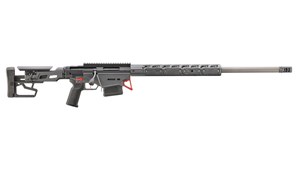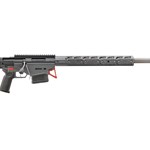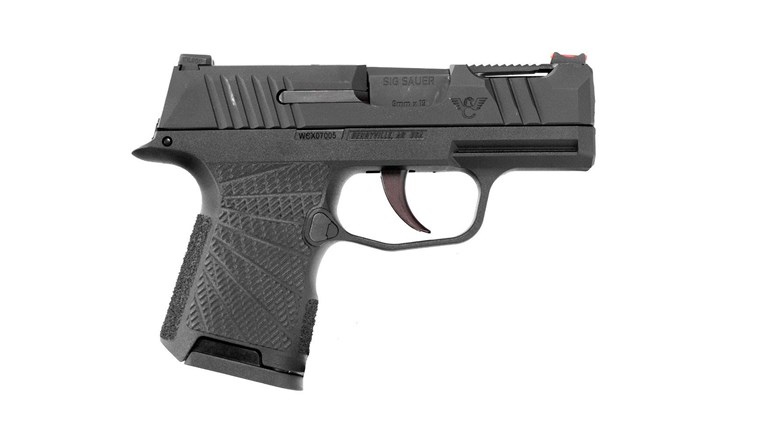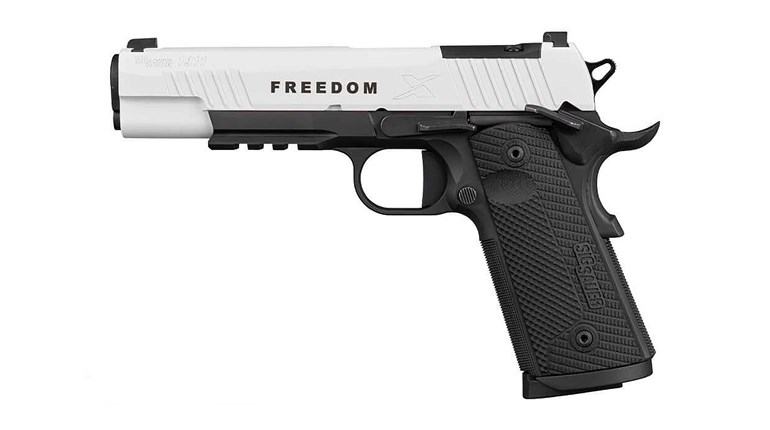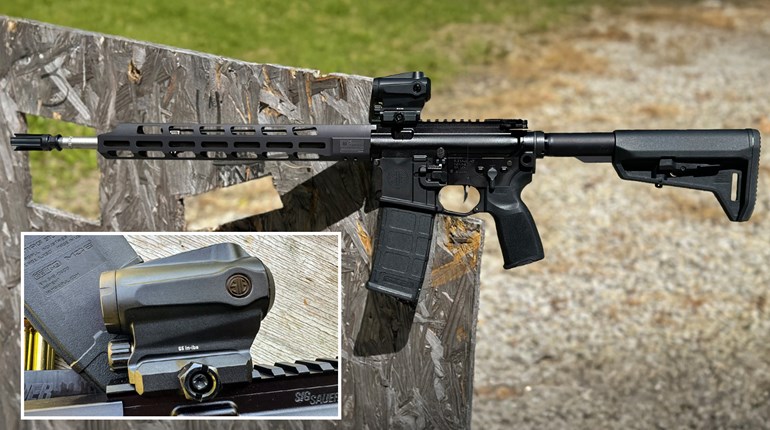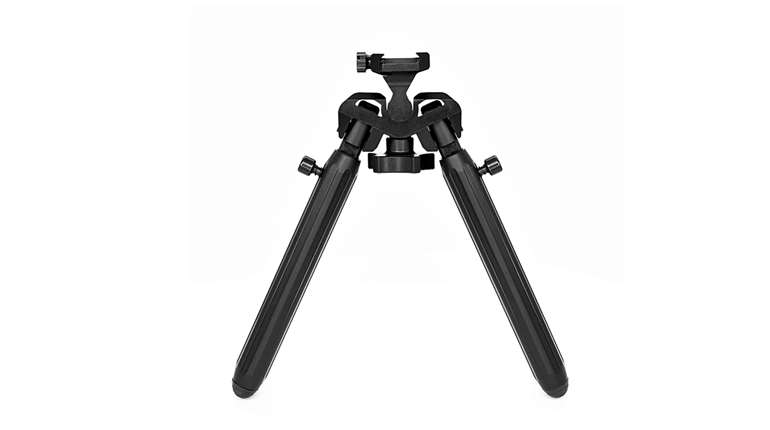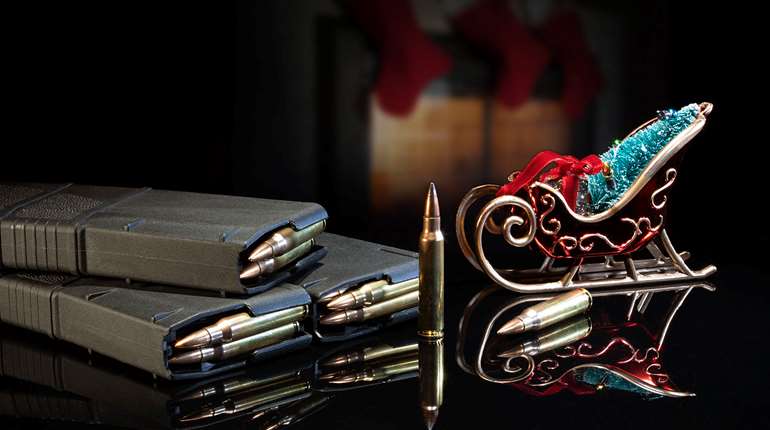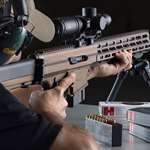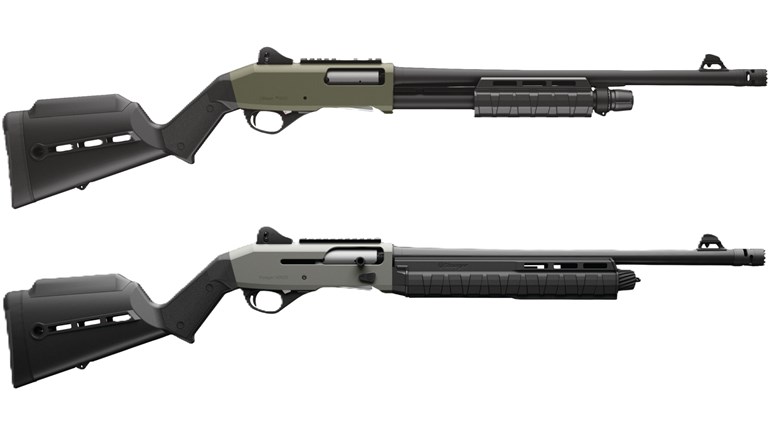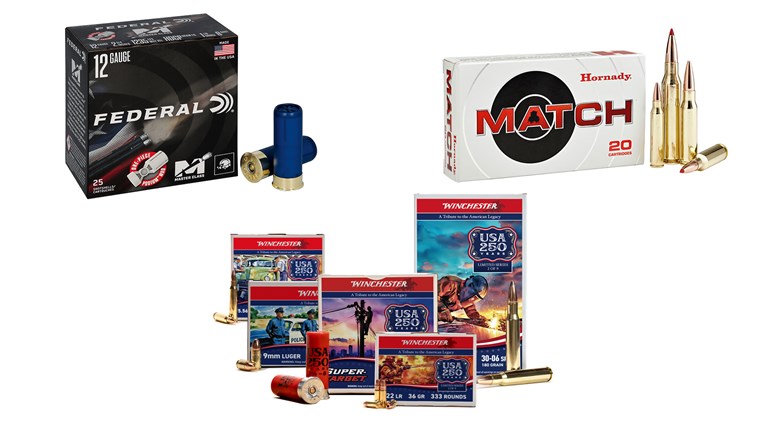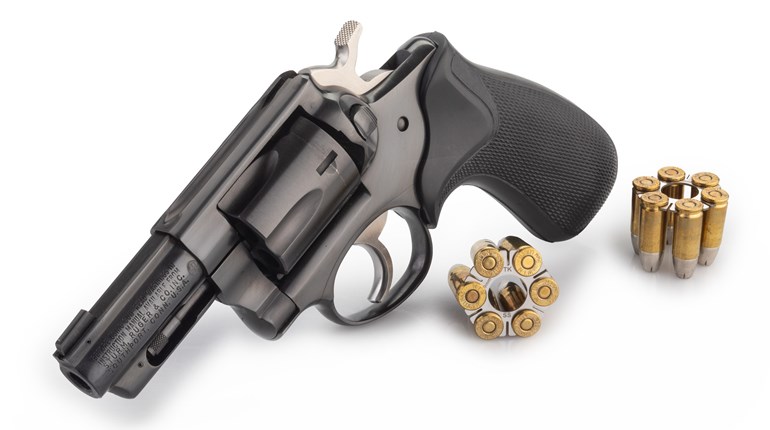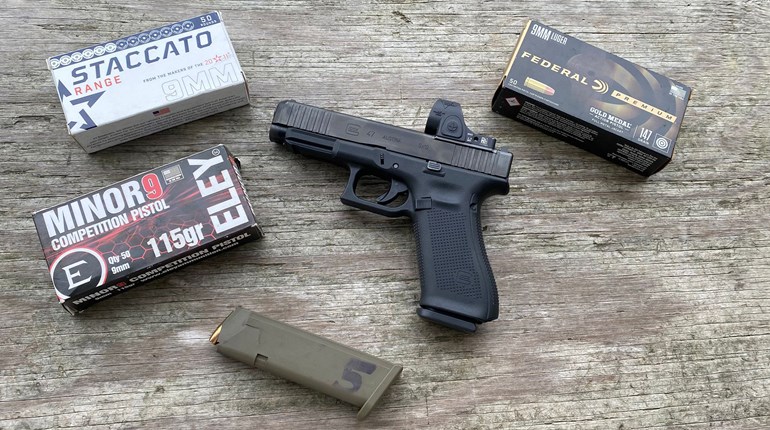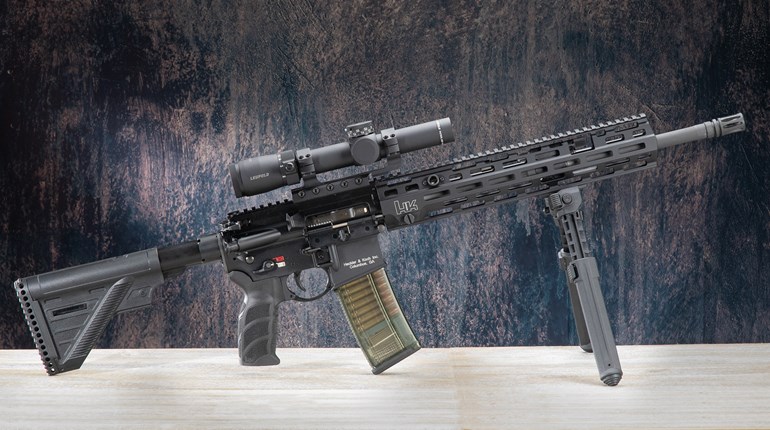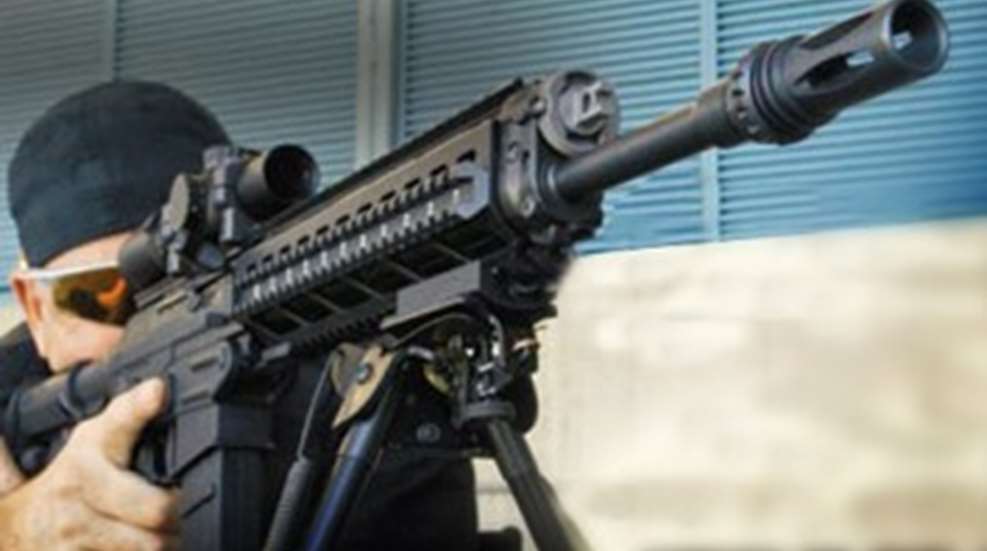
The story of the new Sig Sauer 556 starts with the AM55, the last in a series of weapons to come from experimentation that began in 1908 focusing on the Mondragon—brainchild of Mexican Gen. Manual Mondragon and the first gas-operated rifle implemented on the battlefield. The AM55, later renamed Selbstladegewehr SG510-0 and designated as the Sturmgewehr 57 (Stgw 57) when it was adopted by the Swiss army in 1957, resulted from the refinement of previous designs, such as the KE7, KE9 KEG-series and N-series, SK46 and AK53 prototypes. Inspiration for the firearm also came from Germany's Sturmgewehr 45 assault rifle.
The Stgw 57 was developed to replace the Schmidt-Rubin bolt-action rifle that, though outdated, was used throughout World War II. It could send 600 rounds of 7.5 mm Swiss (Model 11)—ballistically equivalent to the .308 Winchester—downrange per minute. The Stgw 57 was a blowback-operated rifle using a roller-action delay. Upon firing, gas pressure forced the cartridge base against the face of the two-piece bolt. When a specific pressure was reached, the locking rollers forced the nose section of the rear portion of the bolt rearward, freeing the rollers to retreat into their housing in the bolt head. A slight delay allowed chamber pressures to reach a safe level, at which time the bolt moved rearward, compressing the recoil spring, extracting and ejecting the spent case and cocking the hammer. Then the recoil spring would propel the bolt forward, where it picked up and chambered the next cartridge. The nose of the rear section forced the locking rollers into their recesses in the receiver, locking up the gun and readying it to fire. Because there was nothing to slow extraction, the chamber was fluted to ease expulsion of spent cases.
Like many of the era's auto-loading rifles, the selective-fire Stgw 57 wasn't a lightweight, weighing in at a hefty 12 1/4 pounds. A pressed steel receiver, a shrouded, 23-inch barrel, a wood buttstock, a folding bipod, a rubberized buttpad and a carry handle contributed to that weight. Feeding the behemoth was a 24-round detachable, staggered box magazine. A 30-round version was also available, as well as a six-round rendition used specifically for grenade-launching blanks. Sights were a standard, folding front blade and a folding, micro-adjustable rear aperture graduated from 100 to 650 meters. Its features, ease of use and renowned accuracy led the Swiss army to adopting the Stgw 57 as a sniper rifle.
Although the Stgw 57 was an excellent design, it wasn't perfect. It fired automatically from a closed bolt in both semi-automatic and automatic modes, which meant if barrel heat wasn't closely monitored "cook offs" were possible—potentially lethal on the battlefield.
Four variations emerged from the basic Stgw 57 (SG510-0) rifle in fairly rapid succession. The first of the series, the SG510-1, was essentially a standard Stgw 57 assault rifle chambered in 7.62x51 mm NATO that weighed 11 pounds. Shortly thereafter the SG510-2 appeared, which was an 8 1/2-pound, scaled-down 510-1 designed for paratroopers. The third version, the SG510-3, chambered for the 7.63x39 mm Russian M43 round, had a short, 161⁄2-inch barrel and weighed 8 pounds, 13 ounces. Each of these rifles wore a straight-comb wood buttstock.
The final rendition in the SG510 series was introduced in 1963. Chambered in 7.62x51 mm NATO and sporting a 19.9-inch barrel, the SG510-4 tipped the scales at 9 pounds, 6 ounces. Its body was made from welded pressings, and both the front and rear portions of the receiver were strengthened for durability. Its barrel, fashioned by cold swaging or hammering, had a muzzle brake that doubled as a flash suppressor. Internal gas rings made the SG510-4 suitable for grenade launching. Unlike its SG510-series brethren—except for the SG510-3, which was modified in conjunction with the development of the SG510-4—the fourth edition had a curved-comb wood buttstock. This feature was better suited for the use of sturdier sights. Its front sight was a dovetailed pillar, and the rear an aperture with press locks allowing movement for elevation adjustment. Although the SG510-4 was an improvement over the Stgw 57, the Swiss army remained committed to the original rifle.
To refine past designs, SIG experimented with the SG530-1—essentially a scaled-down Stgw 57 chambered in 5.56x45 mm NATO. Like its predecessor, the SG530-1's receiver was made of steel stampings; however, for the first time the rifle wore a buttstock and a fore-end made of plastic, which contributed to its lighter 7-pound, 8-ounce weight. A folding, metal stock version was also offered, though it weighed slightly more. The SG530-1 had an 18-inch barrel with a compensator and grenade-launching rings, and had a cyclic rate of 550 to 650 rounds per minute.
For the selective-fire SG530-1, SIG changed to a new operating system, partly due to potential extraction problems when a fluted chamber wasn't used and the decreased "cook-off" limit of the 5.56x45 mm NATO cartridge. Rather than using the identical delayed-blowback, roller-locking system of the Stgw 57 and subsequent SG510 variations, the SG530-1 delved into gas operation. SIG retained the two-piece bolt and roller-locking system of the previous models, but added a gas piston assembly above the barrel. When fired, gas bled from the barrel impinged upon the piston head, thereby forcing the rear portion of the carrier back enough for the locking rollers to disengage the receiver wall. The bolt then traveled rearward, extracting and ejecting the spent case and cocking the hammer before hitting the recoil spring and rebounding forward, chambering a fresh cartridge and forcing the locking rollers back into the receiver's recesses.
Problems experienced with the breech system when it encountered the high pressure of the 5.56x45 mm NATO cartridge, combined with the high cost of manufacture, sealed the fate of the SG530-1. SIG set about designing its next rifle, the SG540-1.
Although the SG530-1 signaled a transition in operating systems for SIG, it was a small change when compared to that used in the SG540 series. The SG540-series gas-operated rifles fired in the closed position and had a rotating-bolt locking mechanism. As the bullet passed the gas ports, propellant gas would flow through the adjustable valve and act on the operating rod, which pushed the bolt carrier to the rear. During rearward movement, the control cam and the guiding surface on the bolt carrier rotated the bolt head so the two locking lugs were disengaged. The bolt assembly moved rearward to compress the recoil spring, cock the hammer, and extract and eject the spent case via a protrusion in the upper receiver housing. Its extractor was contained on the bolt assembly. The force of the compressed recoil spring pulled the bolt assembly forward and fed the next round into the chamber. In the final stage, the bolt head rotated and locked.
The selective-fire SG540-1 used an extended travel piston system—with the recoil spring wrapped around the piston—and an adjustable, three-position gas regulator located at front of the cylinder. Its normal firing position was "1," however, if the rifle was lacking energy due to excessive fouling or debris it could be switched "2," which was an oversized port. Position "0" fully closed the valve and was only used for launching grenades. The rear of the piston fit in a hole in the bolt carrier, which was held in place by the operating handle, inserted through a slot in the bolt carrier. Cyclic rate was 650-800 rounds per minute.
There were three models in the SG540 series: the SG540-1 and SG543-1 (carbine) were chambered in 5.56x45 mm NATO, while the SG542-1 was in 7.62x51 mm NATO. Besides manufacturing the SG540 series in Switzerland, they were also built in France by Manurhin. The gun could be fired single-shot, three-round burst (optional) or full-auto, all chosen by the fire selector that also served as the safety. Like its predecessors, the SG540-1 was fitted with a flash suppressor that also served to attach grenades. As for sights, the rifle was supplied with a hooded front and rotating rear drum that could be graduated from 100 to 500 meters (for 5.56x45 mm NATO) or 100 to 600 meters (for 7.62x51 mm NATO), though an optic could be attached. Stock options were a traditional, fixed synthetic or folding, skeletonized metal version. The fixed stock, pistol grip and fore-end were manufactured from plastic to save weight, and utilizing metal stampings minimized costs. Other noteworthy features included a two-stage trigger and a bolt hold-open device.
From the SG540-1 was created the prototype SG541-1, developed for trials against rival Eidgenössische Waffenfabrik in hopes of being adopted by the Swiss army. The rifle was made with two barrel lengths and had a synthetic, skeletonized buttstock, an integral bipod and a modified safety catch. The decision to replace the Stgw 57 with the newer SG541-1—renamed the following October to SG550-1 (SG551-1 for the carbine version)—was announced in February 1983.
The SG550-1, a.k.a. Sturmgewehr 90 (Stgw 90), is currently the Swiss army's infantry rifle and retains the same operating system as the SG540-1—gas-operation and a rotating bolt mechanism. Standardized on the SG550-1 was the optional three-round burst capability of the SG540-1. An ambidextrous safety incorporates a fire selector with four settings: "S" safe; "1," single fire; "3," three-round burst; and "20," full auto. Cyclic rate is 700 rounds per minute.
Careful attention was paid to minimizing the weight of the SG550 series rifles, such as using plastic for the handguard, the magazine and the buttstock, the latter of which is skeletonized to provide a further reduction. The standard SG550-1 has a side-folding buttstock and a lightweight, integral bipod housed beneath the handguard. Its receiver and several other components are produced using steel stampings and welding—a cost-saving approach. Feeding the SG550-1 are 5-, 20- or 30-round detachable magazines that are transparent to indicate remaining ammunition. For faster reloads, multiple magazines can be clipped together.
Like the SG540-1, the SG550-1 has a bolt hold-open device and a bolt catch button on the lower left side of the receiver. The full-size rifle has a 20.8-inch barrel, while the carbine has a 12-inch version, both hammer-forged. The rifle's flash suppressor can be used to launch grenades, whereas the carbine cannot.
Sights on the SG550-1 are a rear, rotating drum and a hooded front sight post. The rear is graduated from 100 to 400 meters and has tritium inserts to aid in low-light sighting, and there is a folding night post attached to the front sight. Optics can be fitted to an integral base dimensioned to Swiss standards. The SG550 in available is a wide range of variants and is currently manufactured by Swiss Arms AG.
Due to civilian interest in the SG550-1, SIG recently decided to build a U.S.-made version named the 556 tailored for the American market. Like the SG550-1, the semi-automatic-only 556 is chambered in 5.56x45 mm NATO, uses the same gas operation system and a rotary-bolt mechanism, and has a two-position adjustable gas valve. Under normal shooting conditions, the valve should remain in position "1," where the rib of the valve is vertical. If fouling becomes excessive, the valve can be switched to position "2," which has the rib of the valve slanted and releases a larger volume of gas against the operating rod. The requirement of position "2" usually indicates the rifle needs to be cleaned, and excessive use of this position increases recoil and places unnecessary stress on the rifle.
Instead of an all-steel receiver and trigger housing, such as found on the SG550-1, the 556 has a pressed steel reciever with a Picatinny rail and a heat-treated, aircraft-grade, aluminum-alloy trigger housing with a hard-coat anodized finish. Using an aluminum alloy for the trigger housing rather than steel keeps the weight, sans magazine, to 7.8 pounds. The trigger housing is also designed to accept M16 magazines—a must for a tactical arm competing in the American marketplace. As with the SG550-1, the provided 30-round polymer magazine can be attached to other SIG magazines for faster reloads. Located just in front of the pistol grip and above the trigger resides the ambidextrous safety lever.
Replacing the side-folding polymer buttstock of SG550-1 is an M4 carbine-style telescoping version with two integral sling attachment points and a battery storage compartment. Peeling back the ribbed, recoil pad at the 12 o'clock position provides access to the dual-chamber storage compartment. Eleven forward-sweeping indentions add a touch of flare to the buttstock. The pistol grip is also made of polymer, has horizontal ribs and a battery storage compartment, which is accessed by pushing in the release latch on the backside of the grip. Depressing the spring-loaded pin on the front side of the trigger guard allows it to swing downward and to the rear, providing better gloved access—a feature debuting on the 556's predecessors. The rifle comes standard with a two-stage trigger and an ambidextrous safety. It also has a bolt hold-open device and a bolt-catch button the lower portion of the left receiver side.
Protecting the 556's gas system, and conversely the hand of the operator, is a vented, polymer handguard with two short, integral accessory rails—one on each side of the barrel. A full-length accessory rail is found on the bottom of the lower handguard. Like the buttstock, the sweeping indentions on the bottom handguard add to its appearance. A 556 SWAT version is also available, which has a tactical quad rail for attachment of more accessories.
The 556's 16-inch, military-grade barrel is cold hammer-forged, and its rifling has a 1:7 rate of twist, thereby enabling it to stabilize heavier and longer match bullets. Capping the barrel is a flash suppressor that features a 1⁄2x28 TPI thread pattern. Its barrel is absent of the gas rings that make its cohorts suitable for launching grenades. The gas block, which is fixed on the barrel, contains the gas port, locates the gas system and accepts the optional front sight, which is dovetailed into place.
Nearly a century of innovation led to the development of the SG550-1, and its civilian clone, the 556, has the most important of its features at an affordable price. With such a storied history, one can only imagine what Sig Sauer will come up with next.
